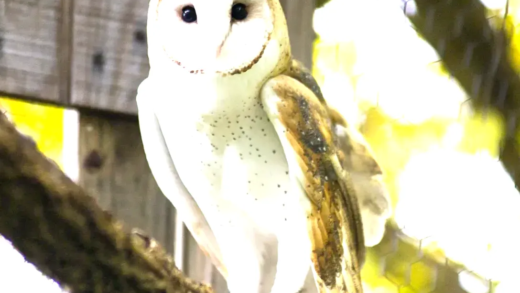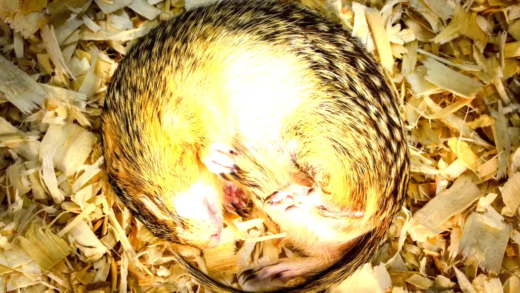This article explores real animals that resemble fantasy creatures, delving into their adaptations, colorful features, and interesting behaviors. It highlights fun facts, comparisons to familiar species, perceptions of their fantastical appearances, and their availability in zoos versus the wild.
Fantasy Creatures in Reality
Real animals that look like fantasy creatures often astonish us with their extraordinary appearances. These fantasy animals evoke images of mythical beings and spark our imagination. For instance, the Axolotl, a type of salamander, possesses striking external gills that resemble a whimsical headdress, making it look like a character from a fantasy novel. Another example is the Okapi, which boasts zebra-like stripes on its legs and a long neck, reminiscent of a unicorn’s grace.
Such creatures challenge our perceptions of nature and remind us of the diverse possibilities within the animal kingdom. They serve as a vivid reminder that reality can be as enchanting as fiction. The unique adaptations and colorful features of these animals invite us to explore the boundaries between the real world and the fantastic.
Unique Adaptations
These bizarre animals thrive in their environments through a variety of unique adaptations. For example, the leafy sea dragon camouflages itself among seaweed, effectively blending in to evade predators. This adaptation is not just for survival; it is also a crucial aspect of their breeding behavior, as males carry eggs in their leafy appendages.
Similarly, the pistol shrimp uses its powerful claw to create a cavitation bubble that produces a sound loud enough to stun prey. This remarkable adaptation showcases the ingenuity of evolution and highlights how these creatures have developed specialized traits to succeed in their habitats.
Understanding these adaptations offers insight into the fascinating ways animals interact with their surroundings, showcasing the creativity of nature’s designs.
Colorful Features
The most vibrant and strange traits of these animals make them visually striking and unusual. Take the Mandarin fish, for instance, which displays a dazzling array of colors, resembling a living painting. Its vivid blues and oranges not only attract mates but also serve as a warning to predators about its toxicity.
Another remarkable example is the Harlequin Toad, known for its bright colors and intricate patterns, which help it blend into the colorful foliage of its rainforest habitat. These colorful features are not merely aesthetic; they play essential roles in communication, mating, and survival.
Exploring these extraordinary colors and patterns reveals how evolution has crafted these animals into living works of art, captivating our imagination and adding to their fantasy-like appeal.
Fascinating Behaviors of Fantasy Animals
Real animals that look like fantasy creatures often exhibit captivating behaviors that further enhance their mythical appearances. For instance, the octopus is renowned for its remarkable intelligence and ability to change color and texture. This skill not only helps in evading predators but also in communicating with others. Another extraordinary example is the poison dart frog, which displays bright colors to warn potential threats, showcasing a fascinating survival strategy.
Additionally, the dancing spider performs intricate movements to attract mates, resembling a ballet more than a simple mating ritual. These behaviors reveal the complexity and creativity in the animal kingdom, making these creatures seem like they stepped right out of a fantasy story. Learning about these interesting behaviors allows us to appreciate the unique adaptations that help them thrive in their environments.
Habitats of Fantastical Beings
Exploring the habitats of these real-life fantastical creatures reveals a diverse array of environments. For example, the Axolotl thrives in the freshwater lakes of Mexico, specifically in the remnants of Lake Xochimilco. In contrast, the Harlequin Toad calls the humid rainforests of Central America home, where it camouflages among the vibrant foliage. These habitats are crucial for their survival, providing the necessary resources for feeding, mating, and protection.
Furthermore, the leafy sea dragon resides among the seaweed and kelp forests of Australia’s southern coast, utilizing its unique appearance for camouflage. Each of these habitats is not just a backdrop; they play a vital role in the life cycles of these extraordinary animals. By understanding where these fantasy-like animals live, we can better appreciate their roles in the ecosystem.
Evolutionary Journeys of Unusual Appearances
The evolutionary journey of these bizarre beings is as intriguing as their appearances. Take the Okapi, for example. This unique animal, related to the giraffe, has evolved its distinct stripes to blend into the dense forests of the Congo. Such adaptations have developed over millions of years, showcasing nature’s ability to innovate.
Similarly, the vibrant colors of the Mandarin fish are a result of sexual selection, where mates prefer the most colorful partners. This evolution not only attracts mates but also serves as a warning to predators about their toxicity. Understanding these evolutionary processes provides insight into why these animals look so fantastical, revealing the intricate relationships between their features and survival strategies.
Fun Facts About Fantasy-Like Animals
These extraordinary creatures come with their own set of fascinating trivia. Here are some fun facts that highlight the uniqueness of these fantasy animals:
- The Axolotl can regenerate not just its limbs, but also parts of its heart and brain!
- Okapis have a tongue so long that they can use it to wash their own eyelids.
- The leafy sea dragon is so well camouflaged that it can be hard to spot even in its natural habitat.
- Some octopuses can taste with their arms, thanks to special cells that detect chemicals in the water.
- Harlequin toads are at risk of extinction due to habitat loss and climate change, making them a symbol of conservation efforts.
These tidbits not only entertain but also educate about the remarkable abilities and challenges these animals face.
Comparing Fantasy Animals to Familiar Species
Understanding how these real animals that look like fantasy creatures compare to more familiar species can be enlightening. For example:
- The Mandarin fish is often compared to the common goldfish due to its vibrant colors, yet it is far more exotic.
- While the pistol shrimp uses its claw for hunting, the more familiar crab relies on its pincers for defense and feeding.
- Octopuses, unlike typical mollusks, possess advanced intelligence, showcasing a significant divergence in behavior.
These comparisons highlight not only the diversity of life on Earth but also the evolutionary paths that have led to such distinct adaptations.
Why Some Animals Seem Made-Up
Many people perceive these extraordinary animals as if they were crafted from fantasy. Reasons for this perception include:
- Unusual features like vibrant colors or bizarre shapes that are rarely seen in common species.
- Myths and folklore that associate certain animals with magical attributes, influencing how we view them.
- The sheer diversity of life on Earth can sometimes blur the lines between reality and fantasy, as nature often surprises us.
This fantastical perception enriches our appreciation of biodiversity and encourages a deeper exploration of the animal kingdom.
Zoo vs. Wild: Availability of Extraordinary Animals
Many of these fantasy-like animals can be found both in the wild and in captivity. For instance:
- The Axolotl is commonly found in aquariums, but it is critically endangered in the wild.
- Okapis are primarily located in the rainforests of the Congo, making them rare sights even in zoos.
- Leafy sea dragons are mainly seen in aquariums, as their habitats are specific to the southern Australian coast.
Understanding where these animals live helps in conservation efforts and emphasizes the importance of protecting their natural environments.





Comments are closed.